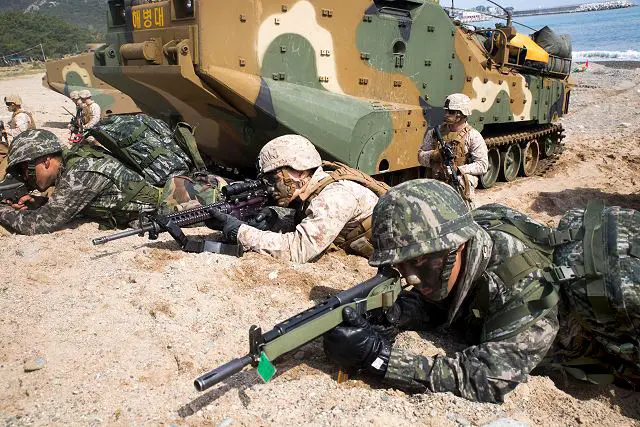Breaking news
United States plans to relocate 30,000 marines in Asia-Pacific to reduce reaction time 12809153.
| 2015
|
|
|||
|
Defence & Security News - United States
|
|||
|
|
|||
| United States plans to relocate 30,000 marines in Asia-Pacific to reduce reaction time. | |||
|
In the face of China's growing presence in the South China Sea, the United States Marine Corps is moving ahead with plans to eventually place nearly 15% of the service's personnel in Hawaii and beyond, reports Duowei News, a US-based Chinese political news outlet.
|
|||
|
|
|||
 Korean and U.S. Marines stand by to receive the order to advance from the shoreline during Ssang Yong 2014 on Doksoek-ri in Pohang, South Korea, March 31, 2014. Korean and U.S. Marines stand by to receive the order to advance from the shoreline during Ssang Yong 2014 on Doksoek-ri in Pohang, South Korea, March 31, 2014. |
|||
|
|
|||
|
Citing a report from South Korea's JoongAng Ilbo, it is noted that the 190,000-strong US Marines Corp specializes in expeditionary warfare and is typically mobilized for regional conflicts or the rapid delivery of combined-arms task forces with the US Navy. Experts believe the aim of of relocating nearly 30,000 marines is to reduce America's reaction time in the Asia-Pacific and form a key part of US president Obama's "Asia rebalancing" strategy.The US-based Marine Corps Times notes China's land reclamation activities and military constructions on disputed islands in the South China Sea as a primary reason for the personnel placement, along with the development of North Korea's nuclear program and Russia's increased activity in Japanese air space. The U.S. Navy Department recently approved the Marine Corps' plan to move 5,000 Marines and their families from Japan to Guam. That will leave about 10,000 Marines in Okinawa, and 8,800 in Hawaii, said Lt. Gen. John Toolan, the head of Marine Corps Forces Pacific Next year, Marines will work alongside foreign troops from Mongolia, South Korea and Japan in the northern Pacific to Australia and New Zealand in the south. The U.S. Marine Corps will also host training exercises as far east as Hawaii and California and alongside troops from India and the Maldives in the western portion of the region. |
|||



















